theartsdesk at the Istanbul Music Festival: East and West in perfect balance | reviews, news & interviews
theartsdesk at the Istanbul Music Festival: East and West in perfect balance
theartsdesk at the Istanbul Music Festival: East and West in perfect balance
From Sufi music magically reimagined to high-quality Mozart from Turkish players
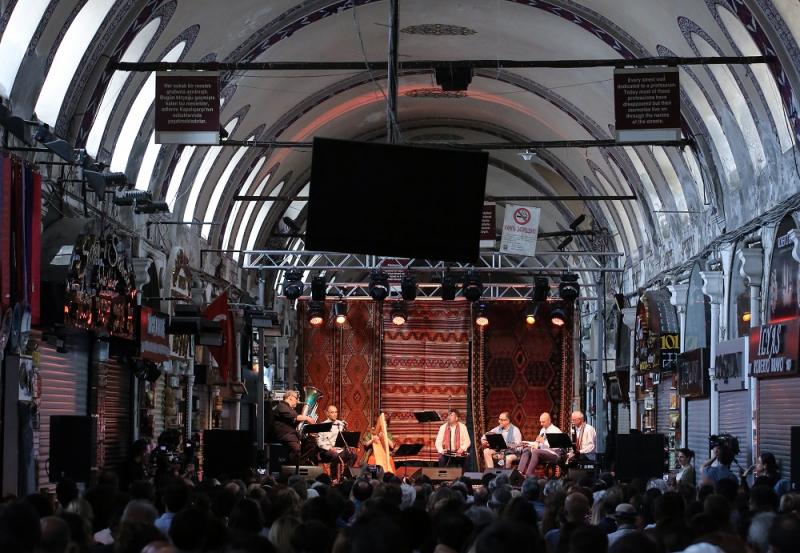
The time is out of joint for Turkey at the moment, but it’s still a country equally split between those looking to the west for the culture of ideas and the more conservative element which at least needs its voice respected. They co-exist peacefully in a great cosmopolitan city like Istanbul, which recently joined Ankara and Izmir in rejecting increased powers for its leader.
The festival theme – "Siradişi", meaning "Unusual" – covers a multitude of quirks and combos, as such tags do. But the slice of weekend life I chose had a neat symmetry in its otherness. After the unique match of venues and performers in last year's day-long "Music Route" embracing churches and embassies off the main thoroughfare of westernised Pera, İstiklal Caddesi, it made sense to experience more of the same in a less familiar area of the city, the former fishing village of Yeniköy some way up the Bosphorus. The music was almost entirely western classics, but as before there was a chance to hear outstanding Turkish musicians trained in our own tradition. Those keeping lively faith with their own flanked the “Route” with Sufi-inspired concerts in a garden and a bazaar (the Grand Bazaar, in short, closed on Sunday and a festival first as a location).
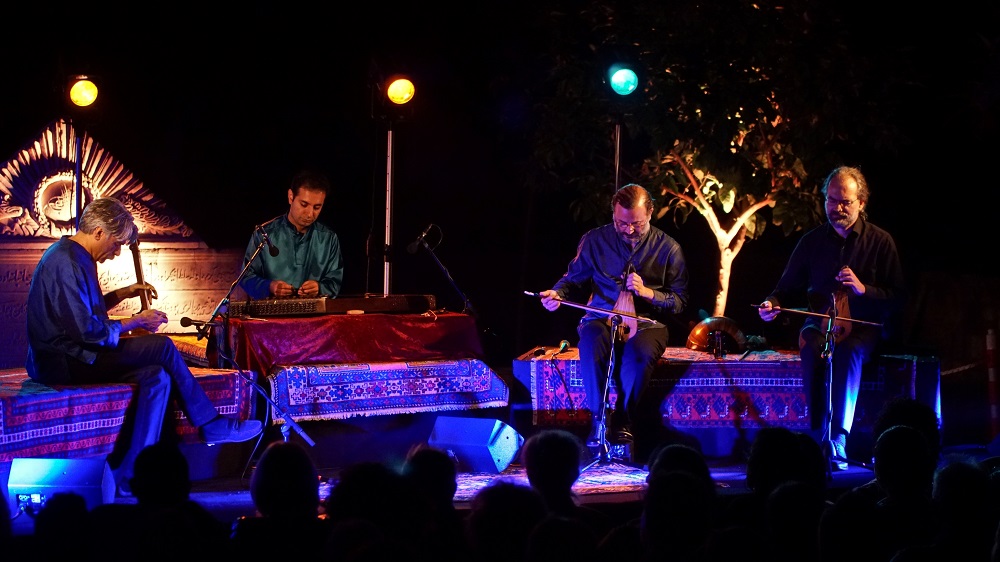 Beyond the gates of the embassies and other grand buildings on the east side of Istiklal Caddesi, green and extensive gardens slope down towards the Bosphorus. The one in the grounds of the Galata Mevlevi Tekke, a convent for those followers of the mystic poet Rumi we know as the whirling dervishes until the orders were banned in the mid 1920s, is exquisite. No dances this time, but a very spiritual ensemble follwing the Sufi tradition on a balmy, breezy evening after a humid day, the street outside thronging with students on the first night of their summer holidays and others celebrating after the daily fast of Ramadan.
Beyond the gates of the embassies and other grand buildings on the east side of Istiklal Caddesi, green and extensive gardens slope down towards the Bosphorus. The one in the grounds of the Galata Mevlevi Tekke, a convent for those followers of the mystic poet Rumi we know as the whirling dervishes until the orders were banned in the mid 1920s, is exquisite. No dances this time, but a very spiritual ensemble follwing the Sufi tradition on a balmy, breezy evening after a humid day, the street outside thronging with students on the first night of their summer holidays and others celebrating after the daily fast of Ramadan.
Istanbul-born Derya Türkan is a leading exponent of the kemençe, a small, pear-shaped fiddle bowed with in the downward position with the base resting on the knee. Its father instrument, with bowl-shaped resonator, the kamanche – the word is Persian – was wielded by the legendary Iranian Kurdish player Kayhan Kalhor; Sokratis Sinopoulos, leading exponent of the Byzantine lyra, the Greek equivalent, switched between another kemençe and exquisite lute; and the line-up was completed by Ali Bahrami Fard on the dulcimer-like santoor, Iran’s national instrument (all four pictured above). A mesmerising 90-minute sequence embraced compositions by the three string players, immaculately amplified to emphasise the eerie proximity of the fiddles to the human voice and rising to its most effective climax in a transported, transcendental solo by Kalhor. The seagulls of the Bosphorus finally broke into the aqueous textures.
The real human voice, accompanied by a very different stringed instrument, marked the ethereal start of the Yeniköy route the following morning as soprano Ayşe Şenogul and harpist Merve Kocabeyeler floated the Bach/Gounod Ave Maria in the modest surroundings of the St Mary Armenian Church. Şenogul is the real deal, with the assured technique of a true lyric soprano, and the innate musicianship too. She now needs to engage the audience, look up from the music, master the French which needed to be better expressed in Fauré and Debussy songs. A lovely idea, no hardship to sit through, but finer things were to come.
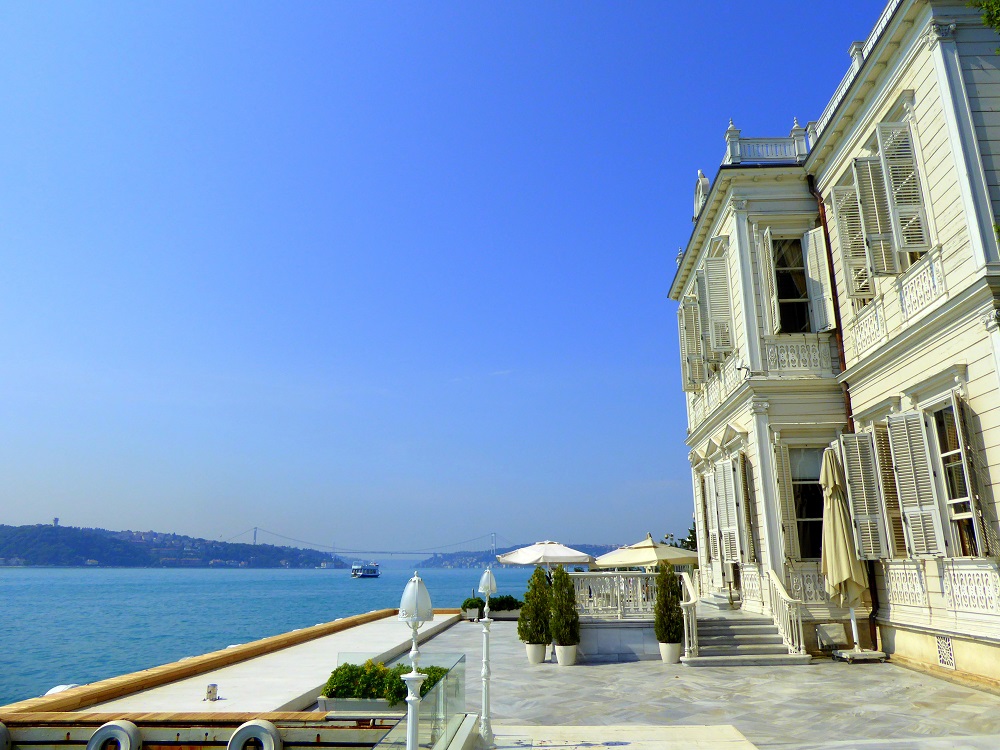
Earlier in the morning, we’d been treated to a history of Yeniköy and the mansion by lively historian Mert Taner. As the son of Jewish and Muslim parents, he understands the healthy mix of the place, which after its very early flourishing as the Greek Neapolis and its natural advantage as hunting grounds for the Byzantine emperors became a tax-free haven for Armenians and relocated Pontic Greeks (in the 1950s, when the Greek Christians in central Istanbul were massacred by eastern Turkish immigrants, local families sheltered the refugees). Though much reduced from its heyday, when there were 2,000 fishermen, Yeniköy still has a large enough Greek and Armenian population for the three churches we attended (there’s also a synagogue). Somewhat more surprising was the Greek orthodox permission for performance; the Patriarch, fortunately, is a keen patron of the festival.
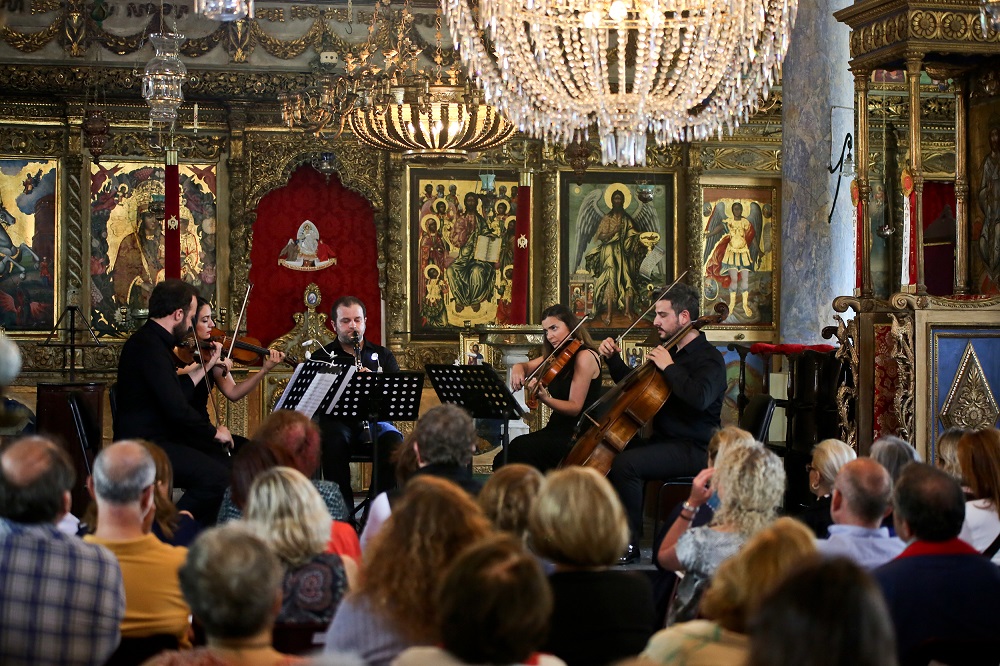 The mansion itself has had fascinating ownership. The present wooden structure dates in essence from the late 19th century when the foreign embassies established their summer residences here. Its most famous occupant was Cairo-born Sait Halim Paşa, whose uncle the Khedive of Egypt commissioned Verdi’s Aida and who eventually rose to the rank of Ottoman Grand Vizier. On 2 August 1914, the crucial German-Ottoman alliance treaty was signed in his study here. Many of the splendours he acquired with the aid of French Orientalist Felix-Auguste Clément – whose gigantic Hunting Scene is one of the few original fixtures – vanished at one point during its long-term ownership by a state bank. The most recent of two restorations after two devastating fires was begun in the 1990s at the instigation of Prime Minister Tansu Çiller who used the mansion as her summer residence, and it’s been done with spectacular attention to detail and craftsmanship. If there are elements of kitsch here, it’s a kitsch faithful to the late 19th century hybrid spirit.
The mansion itself has had fascinating ownership. The present wooden structure dates in essence from the late 19th century when the foreign embassies established their summer residences here. Its most famous occupant was Cairo-born Sait Halim Paşa, whose uncle the Khedive of Egypt commissioned Verdi’s Aida and who eventually rose to the rank of Ottoman Grand Vizier. On 2 August 1914, the crucial German-Ottoman alliance treaty was signed in his study here. Many of the splendours he acquired with the aid of French Orientalist Felix-Auguste Clément – whose gigantic Hunting Scene is one of the few original fixtures – vanished at one point during its long-term ownership by a state bank. The most recent of two restorations after two devastating fires was begun in the 1990s at the instigation of Prime Minister Tansu Çiller who used the mansion as her summer residence, and it’s been done with spectacular attention to detail and craftsmanship. If there are elements of kitsch here, it’s a kitsch faithful to the late 19th century hybrid spirit.
Our second church, the Greek Orthodox Aya Yorgi, was rich in icons and glittering light, if of no great antiquity. Within its warm acoustic, it was clear that the all-Turkish Semplice Quartet is a team of perfect subtlety and cultured playing, with distinction in every phrase of the Mozart Clarinet Quintet shared with And Karabacak (pictured above). Having recently spent time studying with Johannes Meissl in Vienna, the Semplices’ understanding of the Austrian classical style was as impressive as any I’ve heard from a young quartet; I’d willingly follow them on a journey through all the Haydns.
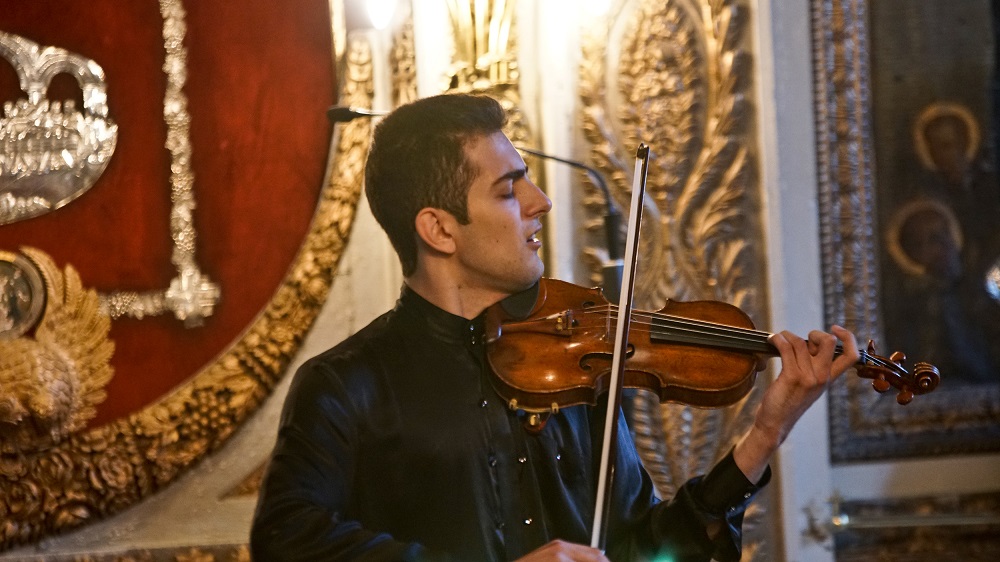 The level of string playing remained at the highest level in our next Greek church, the beautifully situated Panayia on the slopes of Yeniköy with a detached wooden bell-tower sitting picturesquely in rose-filled gardens above the main building. Dark and atmospheric within, the church played host to a 19-year old connected as strongly to Istanbul as to the homeland where he’s already a hero, Azerbaijan. A youngster who plays the Bach solo sonatas – we heard the first two – is either foolhardy or a master; Elvin Hoxha Ganiyev, about to work with Gergiev, is already the latter (pictured above).
The level of string playing remained at the highest level in our next Greek church, the beautifully situated Panayia on the slopes of Yeniköy with a detached wooden bell-tower sitting picturesquely in rose-filled gardens above the main building. Dark and atmospheric within, the church played host to a 19-year old connected as strongly to Istanbul as to the homeland where he’s already a hero, Azerbaijan. A youngster who plays the Bach solo sonatas – we heard the first two – is either foolhardy or a master; Elvin Hoxha Ganiyev, about to work with Gergiev, is already the latter (pictured above).
Our final destination in the late afternoon was the Austrian Cultural Forum, in the late 19th century Palais Yeniköy allocated to the ambassadorial staff of Franz Joseph I, rife with his monogram and the most extravagant cluster of Venetian chandeliers. This time we expected the sophistication of the Vienna-trained Trio Immerso (pictured below), with pianist Mariam Vardzelashvili conjuring atmospheric miracles from the house Bechstein in Schubert’s spellbinding late masterpiece of a movement, the Trio Notturno, and catching the right mix of robustness and weird fantasy in Brahms’s C minor Trio.
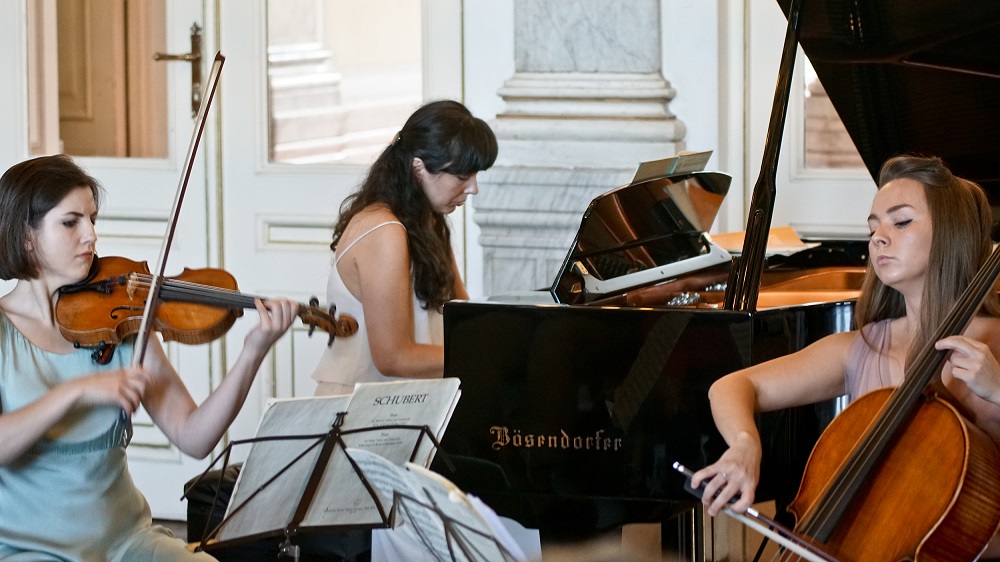 They were giving an extended programme the following morning in the same venue, but those hours offered the only chance to explore another major mosque along the backbone of hills above the Golden Horn (last year’s revelation was the stunningly situated Sulemaniye). The Fatih (Conqueror) complex was full of Ramadan life and fun, both inside and out: mobile phones shamelessly wielded, kids on scooters and roller-skates in the stunning courtyard, old men sleeping against pillars. A half-hour walk took me back towards the more touristed zone around the Grand Bazaar, where at the entrance opposite the surprisingly whimsical 18th century Nurosmaniye Mosque we were guided through the passageways of shuttered shops to rows of seats sloping downwards to the stage.
They were giving an extended programme the following morning in the same venue, but those hours offered the only chance to explore another major mosque along the backbone of hills above the Golden Horn (last year’s revelation was the stunningly situated Sulemaniye). The Fatih (Conqueror) complex was full of Ramadan life and fun, both inside and out: mobile phones shamelessly wielded, kids on scooters and roller-skates in the stunning courtyard, old men sleeping against pillars. A half-hour walk took me back towards the more touristed zone around the Grand Bazaar, where at the entrance opposite the surprisingly whimsical 18th century Nurosmaniye Mosque we were guided through the passageways of shuttered shops to rows of seats sloping downwards to the stage.
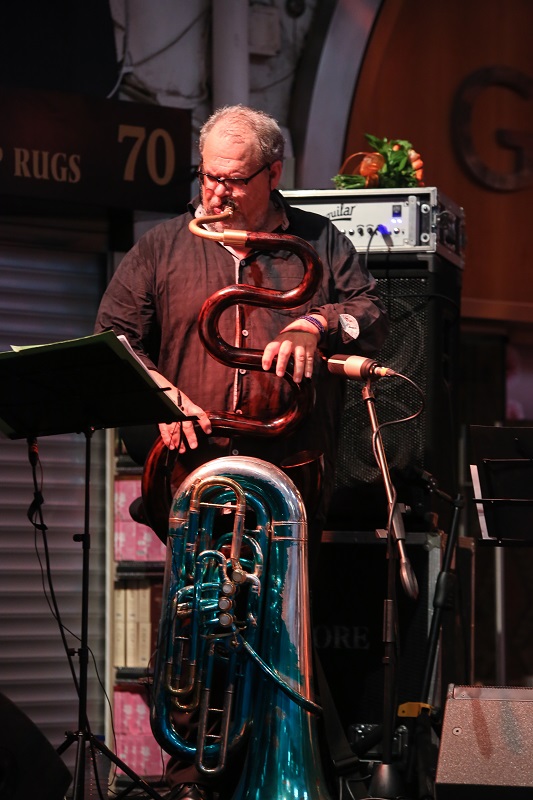 Here I fell in love with the Şimdi Ensemble. Founder members are Bora Uymaz, master interpreter of traditional Sufi maqams and hymns complete with florid melismas and microtonal artistry as well as composer of over 600 songs, and harpist Şirin Pancaroğlu. Solo improvisations also brought the ney (Turkish flute), oud (lute), another kemençe and percussion to the virtuosic fore, but most startling were the jazz wonders of Michel Godard, very much a team member despite outlandish solos on tuba and serpent (pictured right). There was a huge variety of set pieces in different modes, from popular songs to keenings around a handful of chromatic notes, but it was in the big final sequence, stitching together high emotional numbers, that the whole overwhelmed. Distinguished western visitors were on the programme for the week to come, but this seemed like an authentic and unforgettable way to take leave of one of the world’s greatest cities.
Here I fell in love with the Şimdi Ensemble. Founder members are Bora Uymaz, master interpreter of traditional Sufi maqams and hymns complete with florid melismas and microtonal artistry as well as composer of over 600 songs, and harpist Şirin Pancaroğlu. Solo improvisations also brought the ney (Turkish flute), oud (lute), another kemençe and percussion to the virtuosic fore, but most startling were the jazz wonders of Michel Godard, very much a team member despite outlandish solos on tuba and serpent (pictured right). There was a huge variety of set pieces in different modes, from popular songs to keenings around a handful of chromatic notes, but it was in the big final sequence, stitching together high emotional numbers, that the whole overwhelmed. Distinguished western visitors were on the programme for the week to come, but this seemed like an authentic and unforgettable way to take leave of one of the world’s greatest cities.
Share this article
The future of Arts Journalism
You can stop theartsdesk.com closing!
We urgently need financing to survive. Our fundraising drive has thus far raised £33,000 but we need to reach £100,000 or we will be forced to close. Please contribute here: https://gofund.me/c3f6033d
And if you can forward this information to anyone who might assist, we’d be grateful.

Subscribe to theartsdesk.com
Thank you for continuing to read our work on theartsdesk.com. For unlimited access to every article in its entirety, including our archive of more than 15,000 pieces, we're asking for £5 per month or £40 per year. We feel it's a very good deal, and hope you do too.
To take a subscription now simply click here.
And if you're looking for that extra gift for a friend or family member, why not treat them to a theartsdesk.com gift subscription?

Add comment